Directed by John Badham
United States, 1977
1977: a year for Hollywood classics. Star Wars, Close Encounters of the Third Kind, Annie Hall, and erm…The Spy Who Loved Me. Among them stands this week’s film, Saturday Night Fever.
If, like some of us at ReidsonFilm, your last encounter with Saturday Night Fever was in the 80s, or if your only knowledge of the film is John Travolta wearing that white suit on a neon dancefloor, prepare to be surprised. There seems to be a global cultural amnesia about just how dark this film truly is. Spattered with profanities and racial slurs, Saturday Night Fever was actually given an X-rating on release – a PG cut arrived in 1979.
The film is based on ‘Tribal Rites of the New Saturday Night’, a New York Magazine report by a British journalist, Nik Cohn, that explored the role of disco in the lives of Italian American kids in 1970s Brooklyn. Twenty years later, he owned up to the fact that the story was a complete fabrication, but never mind… Saturday Night Fever was the vehicle that propelled John Travolta to superstardom, which in itself is ironic as the film was conceived as a low-budget filler while producer/entrepreneur Robert Stigwood was raising money for another movie musical, Grease.
…it’s Taxi Driver with dancing – John Travolta
And it is that clash between the depiction of the grim and gritty underbelly of New York in the 70s and the disco fantasia that is so striking. Not so different really from the musicals of Hollywood’s Golden Age when you could step on the dance-floor and your troubles would melt away.
The film opens with one of cinema’s great opening credit sequences. A bird’s-eye view of New York City guides us across Brooklyn Bridge as the needle is dropped on the Bee Gees’ Stayin’ Alive… A pair of red shoes appears but this isn’t Oz, it’s Bay Ridge NYC. The man wearing those shoes carries a can of paint as he walks - no, struts - in sync with the music. The camera pans up to show a young man clad in a bright red shirt, tight pants, and a leather jacket. This is John Travolta as Tony Manero. It’s positive, upbeat, but if you listen closely, you will hear that lyric:
Life goin' nowhere, somebody help me
Somebody help me, yeah
Saturday Night Fever is not a film showing us the bright lights and big city – this is a New York of unemployment, hopelessness, and despair. A place of poverty, not only of opportunity, but also imagination. Unlike Grease, this is not a film your school will be putting on for its end-of-year show.
Tony goes back to a volatile family home where his unemployed father and fervently religious mother toss brickbats at him when not abusing each other. And if 70s gender politics are new to you, as Tony goes to clear some plates from the table after dinner, his father tells him to leave them alone as, “that’s a woman’s job.” Upstairs in his bedroom, he puts on his deodorant, dons gold chains and brushes up his hair. Reflected in the mirror, on the wall next to a crucifix we can see Al Pacino as Serpico and Sylvester Stallone as Rocky Balboa – two Italian Americans who outgrew their neighbourhoods. The question is, will Tony do the same?
This is the weekend and Tony and his friends are heading to their club of choice, 2001 Odyssey. It’s worth remembering that disco was born in clubs providing a protected space for the marginalised: predominantly gay, African American, and Latino men and women. Not so here, where the banter of Tony and his pals lays bare their homophobic, racist, and misogynistic worldview.
And yet, the club serves as an escape for Tony. On the dance-floor he is king, and the dazzling lights along with the Bee Gees’ soundtrack really are seductive, as pretty much the whole club joins in the LA Hustle line dance. For just a moment everyone is unified as they move together, entranced by the beat. But really, it’s all about the boy as the floor clears for Tony and Travolta launches into an incandescent solo performance, filling the frame in an unbroken shot, to You Should Be Dancing.
Rocky escaped his environs through boxing and for Tony? Well, he sees opportunity knocking with the 2001 Odyssey dance competition – top prize $500. To win, he dumps his usual neighbourhood partner, Annette (Donna Pescow), for the supposedly more sophisticated and skilful outsider, Stephanie, played by Karen Lynn Gorney.
And to be honest both women here are treated pretty crudely both by the boys and by the script. Annette really is a cliché of a character, desperate to prove her maturity through offers of sex, and her brutal treatment at the end of the film strays too far into the ‘she was asking for it’ trope for my liking. Stephanie, the one character who makes it across the bridge to live in Manhattan, only does so by sleeping with a sugar daddy and her pretensions to social mobility are skewered by Tony as he mocks her accent and constant namedropping.
Of course, Tony and Stephanie do win the dance contest in spite of what is actually a pretty subdued and unimpressive performance – Tony is so much better when he dances alone. The defeated Puerto Rican couple were much more accomplished and entertaining, and Tony knows it. To everyone’s surprise he calls it out for the racism it is and hands the couple the trophy and the prize money. And in what seems an enlightened moment Tony launches into a monologue:
This place is a shithole! The friends I hang out with are such assholes, I can't believe them sometimes... Everybody's gotta dump on somebody, nobody can do it straight right? My father gets dumped on at work, so he comes home and dumps on my mother right? And the spics are dumping on us, so we gotta dump on the spics of course. Everybody's dumpin' on everybody!
But this breakthrough is short-lived as immediately afterward, filled with a sense of inadequacy and self-loathing, he attacks Stephanie and tries to force himself upon her. She responds with a swift knee to the groin. And from here, Saturday Night Fever gets much, much darker.
It does feel though, as if the filmmakers have bitten off more than they can chew, because after grappling with a gang rape and a suicide they sprint towards the closing credits. The film is wrapped up with an unconvincing ‘let’s be friends’ reconciliation between Tony and Stephanie. Tony really has been let off the hook here. But as an original tagline for the film says: Where do you go when the record is over?
It is the dance scenes that take centre stage - frenetic, stylised editing, you can’t help but be drawn in. The more sinister aspects of the film fade away - N
Reids’ Results (out of 100)
C - 74
T - 68
N - 75
S - 76
Thank you for reading Reids on Film. If you enjoyed this review please share with a friend and do leave a comment.
Coming next…The Image Book(2018)

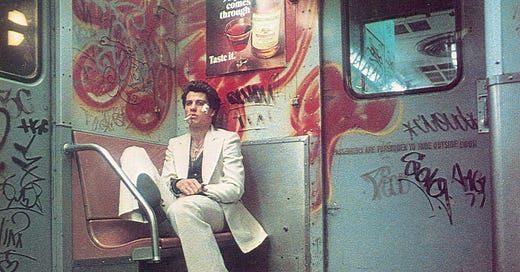


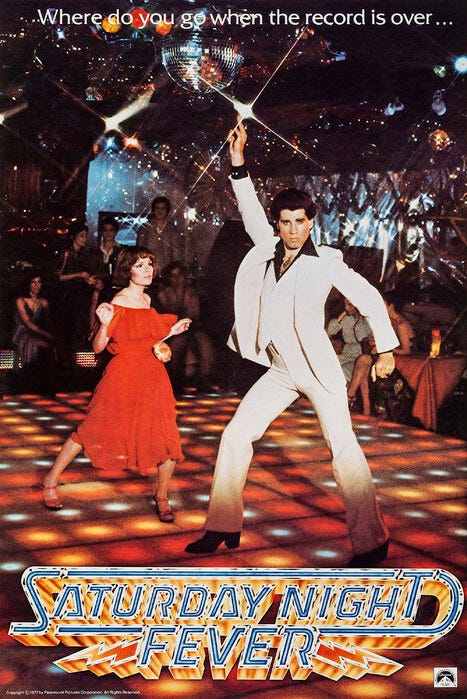

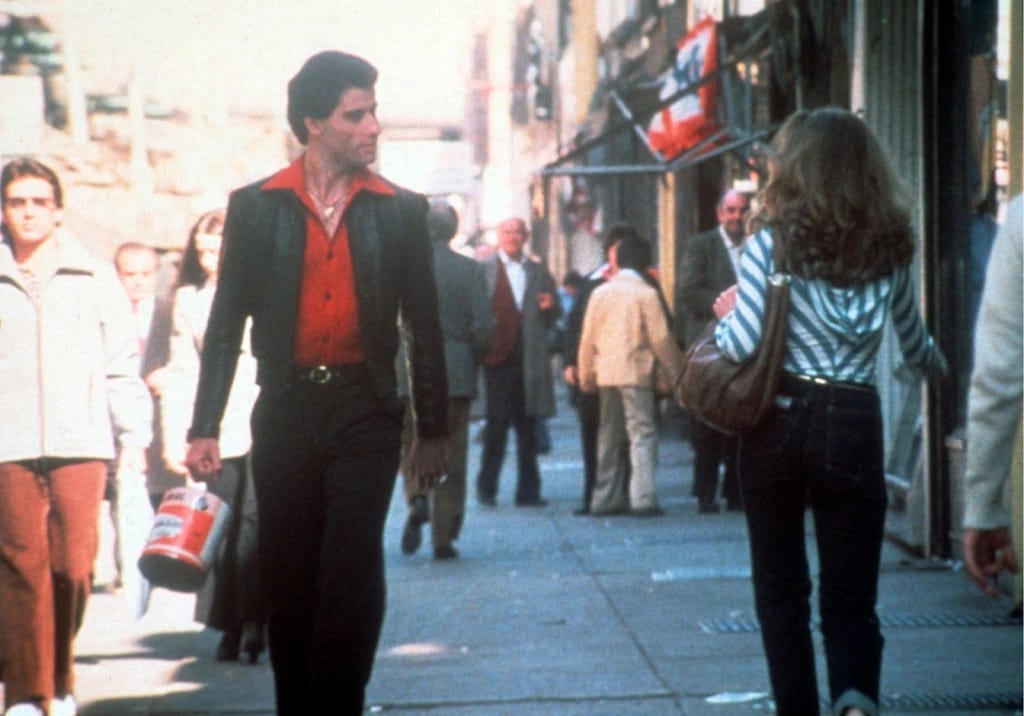
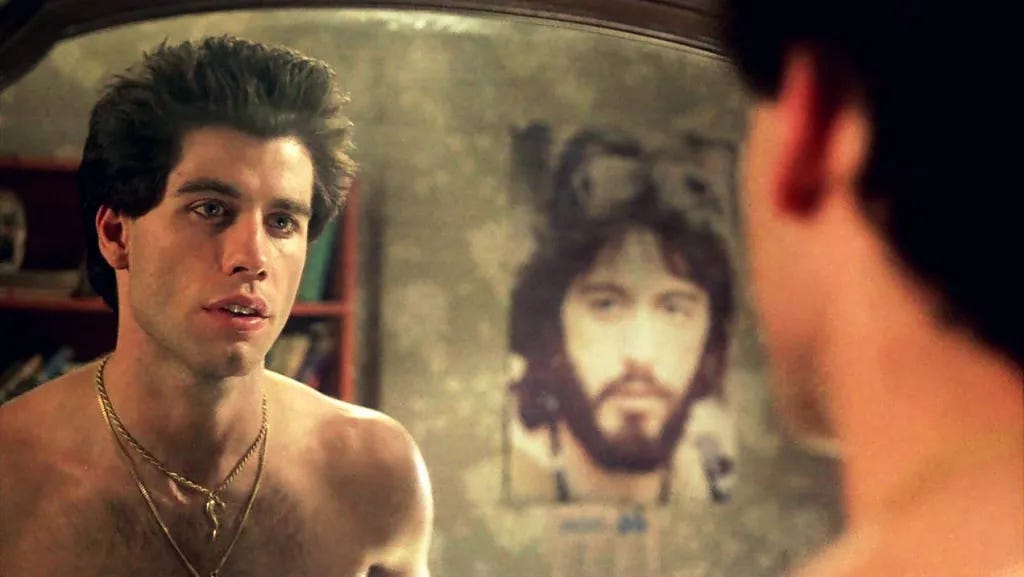
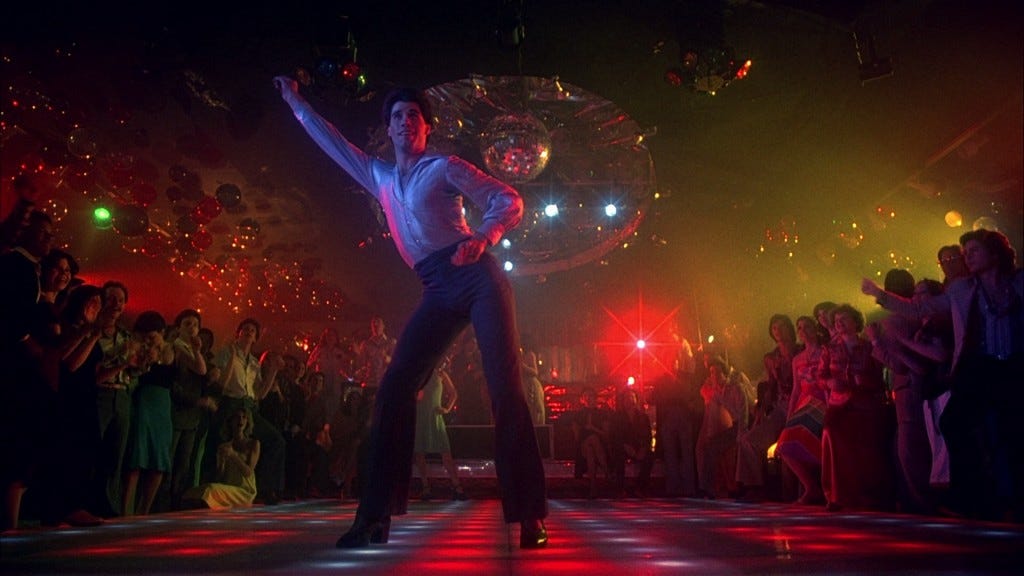

Saturday Night Fever is one of my all-time favourite films! What a movie. I absolutely love the opening scene with John Travolta's character, Tony Manero, strutting through Brooklyn. The cinematography in that sequence is simply brilliant."